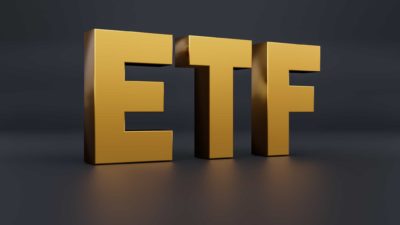Although shares and property are the 'go to' assets that people usually discuss within an 'investing conversation', the reality is stocks and land aren't the only investments you can make. There's fixed-interest, credit lending, bonds, fine art, cryptocurrencies, infrastructure, commodities, cars… the list goes on.
All asset classes have their advantages and disadvantages – and all have made many people very wealthy through the years.
There is one asset class I haven't mentioned though – one that happens to be one of the oldest out there. Yes, I'm talking about gold.
At first thought, gold doesn't seem like your average 'investment'. It's just a metal, after all (albeit a precious one). But this metal has a very interesting history, and some characteristics that make it a unique investment and store of wealth. So lets examine what role (if any) gold can or should play in a modern investing portfolio.
A brief history of gold
Gold has fascinated and enthralled humans since the dawn of time. As the only yellow metal in existence, gold's natural beauty and rarity resulted in its use as one of the first forms of money. Ancient civilisations like the Romans, Greeks and Egyptians used gold as a store (and display) of wealth and power, and this has continued into the modern era.
For most of modern history, the US dollar and all other currencies were defined by their value in gold – an arrangement known as the 'gold standard'. The gold standard was in place in various forms for most of the 19th and 20th centuries. It was deemed desirable as it allowed the the supply of money across all economies to remain stable and static, with very little inflation or deflation. After all, the government couldn't make more gold, so it was tethered to a fixed supply of dollars.
During the First and Second World Wars, this system started to show strain. Governments started spending more than they could afford in gold to keep the war efforts up, and therefore couldn't maintain the credibility of money supplies. This resulted in several 'devaluations' of the US dollar, which had become the world's reserve currency after 1945.
By the time the 1970s rolled around, the Vietnam War was taking its toll on the US and it was once again spending more than it had in gold reserves. Thus, in 1971 President Richard Nixon announced that the link between gold and the dollar would be broken. This was supposed to be a temporary measure, but it was never reversed. Thus, the US dollar and all other global currencies became what's known as 'fiat' – not tied to anything of value except other currencies.
This new 'fiat' system is the one we all live within today.
What role does gold play today?
As gold is no longer formally tied to any monetary system, many people now view it as 'just another commodity'. However, gold (unlike most other commodities) actually has very few industrial/economic uses. Most gold produced today is used for jewellery or investing purposes.
It's this 'immunity' from industrial use that forms part of golds modern appeal. You will often hear gold describes as a 'safe haven'. This is because the appeal of a physical store of wealth never seems to go out of fashion for long. During market crashes or times of economic or geopolitical uncertainty, investors always seek out gold because of its perceived 'safety'. Because gold is physical and incorruptible, it has a certain appeal over 'paper' assets like stocks and bonds in these conditions.
To give a real-life example, between 2007 and 2011, the US S&P 500 index lost around 23% of its value as a result of the global financial crisis. Over the same period, gold went from around US$700 per ounce to approximately US$1,900 per ounce – an increase of 180%.
Investors also like to use gold as a 'hedge' to protection against inflation. It becomes more difficult to to manage a portfolio of investments during periods of high inflation. Gold's physical qualities and limited supply help it maintain its real value against an inflating currency, making it a useful way to protect against a falling currency.
So it's for these reasons that many investors use gold in their portfolios. I personally think of it like insurance – most of the time you don't need it, but it's very useful in bad times.
How can you invest in gold?
Thankfully, in our interconnected age, there are a variety of ways to get exposure to yellow metal. Here are three:
Physical bullion
This is the traditional way of investing in gold, but also the most inconvenient. Gold is available in its pure form (bullion) mostly as coins or bars, but obviously getting and storing physical gold is expensive. You might need protections like a safe or lockbox to store the gold, or you can pay to store it in a bank vault or other protective custody. Thus, many investors don't bother with this route (although many of the more paranoid investors still do).
Gold miners
Another way of indirectly investing in gold is through buying shares of gold mining companies, such as Newcrest Mining Limited (ASX: NCM). If a company owns a mine, it owns all of the gold stored within it, giving you as a shareholder partial ownership too, Also, if the price of gold rises, it usually means the share prices of the miner will rise too – often by a higher amount that the gold itself. Thus, a gold miner is a kind of 'leveraged bet' on the gold price.
ETFs
This is probably the easiest way to invest in gold these days. Exchange traded funds (ETFs) provide a simple vehicle to own gold without having to physically store it. The fund will own a pile of gold and issue units based on the price of the gold. If more investors buy in, the fund makes new units and purchases more gold with the capital.
There are a couple of gold ETFs on the ASX. ETFS Physical Gold ETF (ASX: GOLD) is the largest, but if you want hedged exposure (taking the fluctuations of the US dollar out of the equation), there's also BetaShares Gold Bullion ETF (ASX: QAU). Theoretically, if the gold price rises by 5%, GOLD units will do the same. Of course, there's no free lunch here – these ETFs do charge a management fee to cover storage and other costs.
Foolish takeaway
There you have it, a basic guide to investing in gold. It's worth noting that gold as an investment remains a topic of debate. Some famous investors like Warren Buffett don't bother with gold and view it as outdated. Others like Ray Dalio recommend holding it in your portfolio, so it's really a personal choice whether you walk down this yellow brick road.
Regardless, I think knowing the full story of gold and why some investors use it helps us better understand the world of investing and finance that we're all navigating. I hope you agree!







